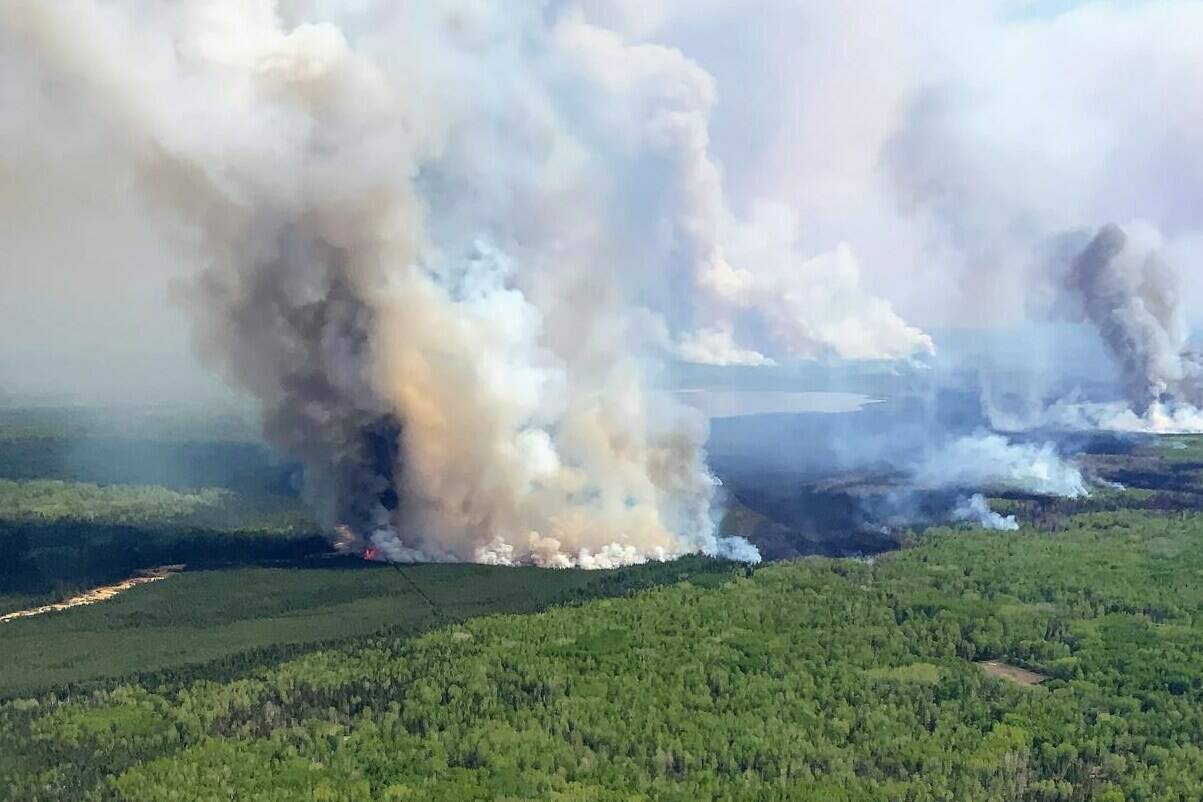With nearly 27 evacuation orders in northern B.C., the province said firefighters continue battling blazes despite challenging conditions.
To date, 159 wildfires have been reported to the Northwest Fire Centre in Smithers, significantly above the 10 year average where typically the fire centre sees around 47.
What’s most notable is that 64 were reported just between July 7 and July 9.
A small success is that 24 of those 64 fires are either being held or considered out at this time, the Northwest Fire Centre’s Ryan Chapman told reporters Wednesday (July 13) afternoon.
He was joined by Todd Flannagan, an incident commander for the Vanderhoof and Fort St. James region, and Cliff Chapman, operations director for the BC Wildfire Service in providing an update for the Nadina, Bulkley-Nechako, Fort St. James and Vanderhoof regions.
“We have seen more fire on the landscape in terms of number of starts, as well as the continuation of hectares burned on the landscape than we have seen in previous years at this point,” said Cliff Chapman.
More than 1,000 fires started in April and just under 400 are still burning. In total, over 1.2 million hectares have burned so far this year throughout the province, compared to a 10 year average, which is roughly 76,000 hectares.
Lighting strikes, ( with 51,000 strikes recorded in B.C. in the last seven days with 76 per cent of those concentrated in the Northwest and Prince George Fire Centres) and dry weather conditions are further challenging firefighters.
“We have had 392 fires in the last seven days, 230 of those fires remain out of control and many of those fires are present in the Prince George and Northwest fire centres,” said Ryan Chapman.
More than 2,000 firefighters are in the province right now and the wildfire service is asking for an additional 1,000 through the Canadian interagency Forest Fire Center.
Another 200 to 300 are expected from Australia, Mexico and the U.S. over the next six to 10 days. The province has also requested people, helicopters and aircraft from the federal government.
“We’re continuing to plan ahead for the next two months,” Cliff Chapman added.
But he said finding help is a challenge because resources are spread thin due to wildfires in Quebec, Ontario and Alberta.
Northwest Fire Centre update:
“Our main priority is to prevent these fires from impacting life and property,” Ryan Chapman said. However, owing to weather conditions, not all fires can be fought at this time,
Chapman said firefighters are focusing on the west side of the fire closest to Burns Lake and the south part of the fire that’s near the Tintgael residential area. Parrot Lake and Peacock Creek, which is south of Houston, are also drawing in resources.
“So we have had favorable winds over the west. We have been able to get quite close to the fire so we’re using heavy equipment bulldozers, excavators followed up by ground crews. And we have established a guard from this line here which is a main 500 kilowatt transmission line. We’re building that guard as close to the fire as possible. And our main goal is to try to stop the fire at that guard.”
“We’re running air controls every day. We appreciate the public finding fires and phoning them in. We are expecting to keep finding new fires and addressing those as quickly as we can while they’re small.”
Public is also being told unnecessary risks and be aware of fire locations heading into the woods.
Vanderhoof and Fort St. James area update:
Vanderhoof and Fort St. James have seen 54 new wildfires since July 7. There are currently 63 fires burning and majority of those are out of control, said Todd Flannagan, the incident commander for the area.
Currently, in Vanderhoof’s G4 zone there are 36 active wildfires and 2,500 hectares burning. In Fort St. James G5 zone there are 27 active wildfires and 35,000-plus hectares burning.
Heavy smoke is expected to continue through the next several days.
“At this time, our main objective is to keep transportation corridors open for access and to support fire operations and all evacuations,” Flannagan said, adding, “The number one priority for the BC wildfires services is to ensure the safety of first responders and all personnel all wildfire response personnel.”

